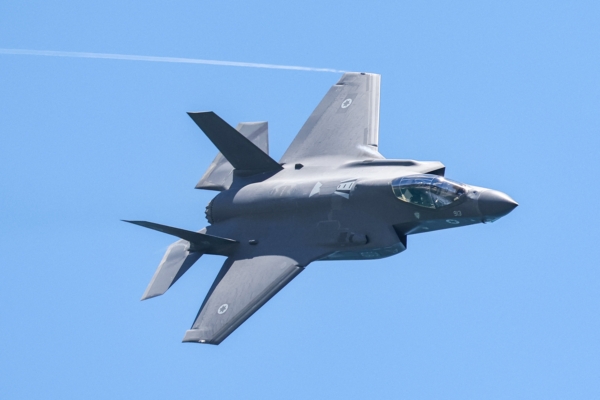Early in the morning on Saturday (October 26), just before 2 a.m., pilots wearing bomber jackets with the Star of David emblem boarded the cockpits of about 100 military aircraft at an Israeli military base. They were preparing for an unprecedented airstrike against Iran. According to reports, the Israeli military deployed its most advanced F-35 stealth fighter jets in this operation. Satellite image analysis indicated that this strike dealt a significant blow to Iran’s capability for large-scale missile production.
In this operation, Israel’s attacks unfolded one after another. Those familiar with the mission told The Wall Street Journal that Israel’s most advanced airborne weapon, the F-35 fighter jet, also participated in the assault, known for its ability to evade enemy radar.
The Jerusalem Post also reported that the Israeli military mobilized over a hundred aircraft, including the F-35 “Adir” stealth fighter, with a flying distance of about 2,000 kilometers.
The Israeli Air Force is the first entity outside the U.S. to purchase the F-35 aircraft, naming its version “Adir” (F-35I) in Hebrew, meaning “mighty one.”
The F-35I fighter, provided by Lockheed Martin, offers Israel unique features tailored to its needs, with the aircraft being the only one customized to foreign specifications. Changes to the F-35I include Israel’s proprietary data link capabilities and an Israeli-manufactured helmet display.
Essentially, Israelis have built their command, control, communication, and computing systems on top of Lockheed’s F-35 aircraft’s existing operational systems.
A report from the U.S. Congressional Research Service stated, “Israel’s F-35 can attack targets in Syria, Iraq, Lebanon, Jordan, as well as most areas of Egypt, Turkey, and Saudi Arabia without aerial refueling.” A public source suggested Israel may have extended the F-35’s range to attack targets within Iran without the need for aerial refueling.
A former Israeli official and a current Israeli official told CNN that as part of Israel’s airstrike against Iran, some Israeli aircraft entered Iranian airspace, highlighting Israel’s significant military capabilities.
Among the approximately 100 aircraft involved in the operation, not all entered Iranian airspace. The Israeli military stated that the assault targeted Iranian missile production bases and air defense systems.
Satellite images analyzed by the Associated Press on Sunday showed damage caused by Israel’s attacks on a secret military base facility in the southeast of Iran’s capital. Experts believed the facility was related to Iran’s previous nuclear weapons program. Israel also inflicted damage on another facility related to Iran’s ballistic missile program.
Some of the damaged buildings were located at the Parchin military base, where the International Atomic Energy Agency suspected Iran had conducted high-explosive tests potentially related to nuclear weapons in the past.
Further damage was observed at the nearby Khojir military base. Analysts believed this base housed underground tunnel systems and missile production facilities.
Iran’s military has not acknowledged the damage caused by Israel’s attacks earlier on Saturday at Khojir or Parchin, but the Iranian military reported that four Iranian soldiers working on the air defense system were killed.
Iran’s Supreme Leader Ayatollah Khamenei stated on Sunday that Israel’s attacks “should not be exaggerated or downplayed,” but he did not call for immediate retaliatory strikes.
Decker Eveleth, deputy research analyst at the Washington-based think tank CNA, told Reuters that Israel’s attacks could “seriously impede Iran’s capability for large-scale missile production.”
Eveleth mentioned that imagery from commercial satellite company Planet Labs showed Israel destroyed three buildings for mixing solid-fuel ballistic missiles and a warehouse at the Parchin region.
He added that satellite images also showed Israel’s attack destroyed two buildings at the Khojir compound, where solid-fuel ballistic missiles were stored.
Images reviewed by Reuters displayed these buildings enclosed by high earthen berms. These structures, associated with missile production, are designed to prevent the explosion of one building from igniting combustible materials in nearby structures.
“Israel said their targets were buildings with solid fuel mixers,” said Eveleth. “These industrial mixers are difficult to produce and are subject to export control. Iran has likely spent a fortune importing many over the years, making replacements challenging.”
He noted that through a limited operation, Israel may have dealt a significant blow to Iran’s large-scale missile production capability, making any future missile attacks by Iran more challenging to breach Israel’s missile defense system.
He concluded, “The strikes appear to be highly accurate.”

